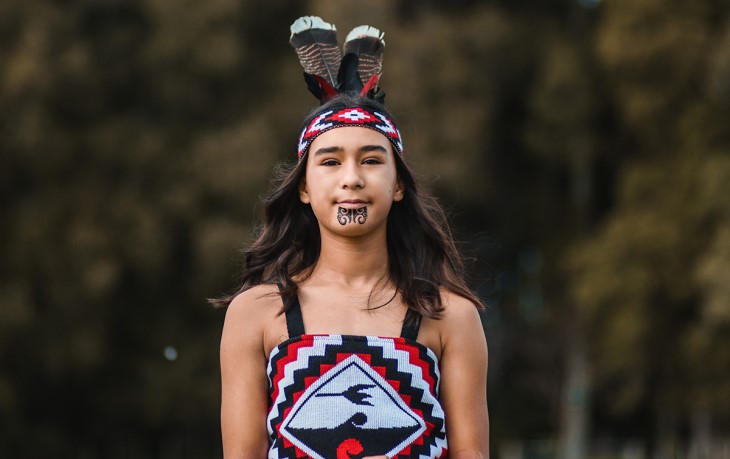Agree with your thinking
Jumping for joy? Or calling for help? E hūro ana i te harikoa? He karanga āwhina rānei?
Last year we helped 200,000 children recover from an injury. We want tamariki to stay safe and active, but we're here for care and recovery if injuries happen.
During summer, tamariki are always outside, running around and playing non-stop. Their energy seems endless. And the trampoline is a favourite spot.
When their cousins come round, it's like they could spend hours jumping up and down. At least it's a chance for the mums to have a coffee and a chat. And it's easy to keep an eye on things, with the kitchen door open onto the garden.
The children egg each other on to jump higher, do a trick jump or a backflip. Who thinks they can be an Olympic gymnast? The laughter and shouting can be deafening, but for the grown-ups, it's the sound of happiness.
But sometimes the sound has an edge to it. Is that screaming? Has something happened on the trampoline? The mums quickly scan to check all the little ones are OK. Thankfully, it's not crying in pain or calling for help – just very excited children. Everybody is fine. Probably a good time for a cold drink and a snack in the shade.
Preventable injuries can happen to children when they're playing, hanging out with friends and whānau, or just doing stuff in their own homes. We want all tamariki to enjoy their childhoods injury-free, and we know that investing early in a person's life has the greatest potential to make a difference. That's why we invest in programmes to keep children safe. And we're also here to provide care and support if things go wrong.

We want children and young people to be safe and flourish in Aotearoa. Last year, we supported over 200,000 children aged under 13 who had an injury. That included those who had a claim involving a trampoline at home. Of the 9,316 people who were hurt on or around a trampoline, 79% of them were children aged under 13.
Many New Zealanders might not even know that we're involved in care if their child is injured. That's because 94% of people we help, including children, simply visit their doctor, a hospital or a physiotherapist for treatment and don't realise that we're working in the background to help pay for the treatment.
Some of the things we help with include:
- doctor visits
- equipment, eg crutches
- support with childcare and education after an injury
- help around the home
- housing modifications for more serious injuries
- counselling
- support for victims of sexual assault
- surgery for more serious injuries.
You can find out more about support for childcare and education after an injury on our website.
Support for childcare and education after an injury
We also partner with New Zealand communities to support the good work they do on injury and violence prevention.
Play is one of the best ways that tamariki develop skills and learn about the world around them. It keeps them active - whether that's playing at home, in the garden, in a playground, at school, or elsewhere. It also helps build relationships as they play with friends and whānau. And it helps them become independent.
Caregivers and parents often have different ideas about what's risky. Ever heard yourself say "careful, you'll fall if you climb any higher up that tree" and the child just edges higher anyway? That's because they don't have the same understanding about what might happen.
But taking some risks is good for them – like trying to jump higher on the trampoline. It helps them learn about themselves and the world around them.
Children spend most of their time at home. And that's where most injuries happen. It can be good for them to push boundaries sometimes, so they learn about their own limits. But we all have a role in preventing injuries.
We know that children want to play, learn and have fun inside and outside. We want them to do it safely, with your help, because we all have a role to play in preventing harm from happening in the first place. Here are some tips on how to create a safe environment for you and your whānau.
- Make sure balconies have a solid safety barrier that they can't climb.
- Have safety catches on windows they can reach.
- Keep gardening tools, equipment, chemicals, poisons, solvents, paints, and sprays out of sight and reach.
- Install safety catches on cupboards and drawers that hold dangerous items, like medicines, poisons and sharp objects.
- Have fire extinguishers handy and mounted on the wall out of reach
- Turn non-essential appliances off at the wall.
- Make sure the bathroom floor is dry after bathtime.
- Clean up spills as soon as they happen.
Whare Kahikā is a free app to help you create a safe physical home environment for tamariki. It has a room-by-room checklist, where you can tick off what you already do well to keep your home safe, and suggests changes you can make to improve safety. It's available in te reo Māori and English as an app from Google Play Store and the App Store. There's also a web version on the Safekids website.
Each year we help 200,000 tamariki learn how to have fun and be safe in the water. A positive early experience around water gives children a lifetime of enjoyment in the wet stuff.
Children aged from five to 13 can participate in Water Skills for Life training, which is taught either at school or at a local pool by a school teacher or swim instructor. It teaches children the skills for life-long water safety, to keep themselves safe and keep an eye on their mates in, on and around the water. We partner with Water Safety NZ on Water Skills for Life.
The St John's in Schools programme teaches children about preventing injuries in their communities and how to respond in an emergency. This programme is for primary and intermediate age children.





